Do you know the first email sent in 1971 consisted of “QWERTYUIOP” as its message content?
Fast-forward 50 years, email has become an irreplaceable part of our life. Be it personal or professional aspect, every person reads at least one email each day.
But instead of getting into the statistics of the volume and the headcount of people using email, let me share an alarming statistic related to project management with emails.
47% of projects miss their deadline because of the lack of inconsistency and improper communication.
Take into consideration that a corporate employee spends at least 2.5 hours every day just checking emails!
One thing is clear, emails are a quick and efficient method of communication, but they do not actually solve the purpose of conveying necessary information in a comprehensive manner.
If you are here, reading this article, I am sure you are also in this illusion of quicksand. Over my career spanning more than 15 years, I have complained and cursed emails often.
I have penned this article to bring out the flaws that come with emails while managing projects. By the end of this post, you will have effective knowledge to overcome this issue of misunderstanding and complete projects on time.
The role of email in project management
More than 86% of professionals use emails for business communication. This emphasizes the importance of emails in the day-to-day life of working professionals.
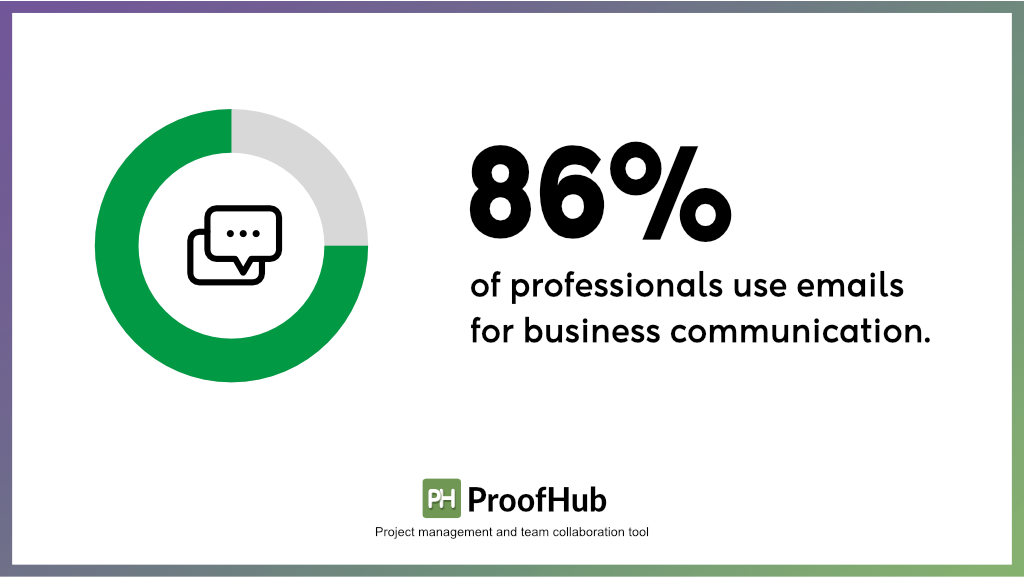
Project management refers to the complete planning and execution of various tasks in a particular order for effective completion within the deadline. Communication and collaboration play a key role in the process.
Email has inherently been serving the purpose of quick communication and passing on information and project files. This means you have the entire team on the same page.
For a detailed understanding of the role of email in project and task management, you can jump over to this article – Email Task Management
Let’s briefly discuss the certain advantages that we have from email project management before moving ahead to some serious discussion.
Advantages of email communication
Email plays a key role in efficiently transferring information and guidelines for the seamless flow of projects.
The most significant advantages of email communication include –
- Simple to use
- Free for your entire team
- Can be accessed from multiple devices and any location
- Helps you become paper-free, thereby, taking you one step closer to a greener planet
- You can effectively send mass messages with ease
Emails have the capability to manage projects effortlessly but at the end of the day, they pretty much function similarly to improvised text messages.
Over the years technology has been developing at an astonishingly rapid pace. The advantages of email that we discussed above are soon converting into limitations.
How does email affect project deadlines?
47% of projects have problems with timescales and budgets resulting in low-quality products.
Hindrances to timescales and deadline management due to ineffective communication and the primary cause here is – Emails.
In this section, we will see the various reasons how emails affect project deadlines.
1. Missing messages and updates
Communication challenges in project management arise when you do not respond to important or urgent emails on time.
Additionally, there are instances when your inbox gets flooded with new emails that you end up replying to emails without actually reading and understanding the subject.
Further, with delayed replies, your team members will not be able to get the necessary updates on time. This eventually results in missed deadlines and project delays beyond control.
2. Disorganized email threads leading to confusion
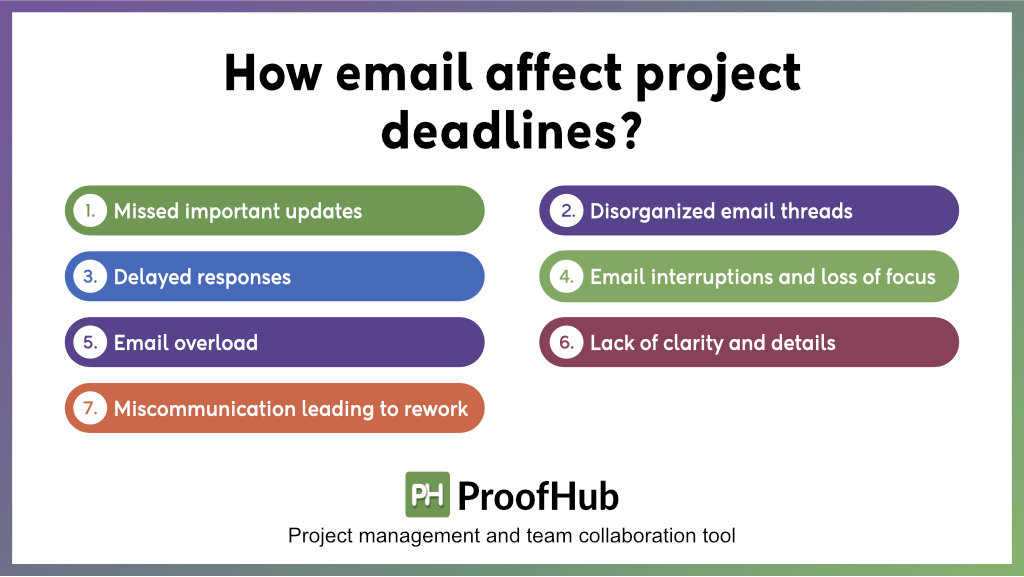
How often do you open your email inbox only to see promotional marketing emails on top?
In the midst of this pile, you miss out on emails that require your immediate reply, When your team members are not getting the necessary updates at the right time, the deadline of the project is impacted.
Complex projects run over a long duration of time. In this time span, you would have numerous conversations about the project with different people. All these conversations are not organized in a single space.
Scattered emails can be a hassle. Multiple email threads and scattered messages make collaboration tough and time-consuming.
Luckily, project management tools have organized discussion channels that make it all smoother. Everything is in one place, making collaboration a breeze.
3. Delayed responses affect task progress
Email can be a real pain when it comes to task assignments and progress.
Have you ever felt overwhelmed by a flood of messages in your inbox, making it hard to spot the important ones about your tasks?
This can cause significant delays in getting started or finishing up your work.
What’s more, emails often lack the urgency of phone calls or instant messaging. So, crucial questions or tasks might not get the quick attention they deserve.
And when you’re working with a team spread across different time zones, things can get even slower. Those time zone differences can lead to long delays in email responses, which can seriously mess with your project deadlines.
So, to deal with these problems, it’s vital to set clear rules for communication, pay extra attention to task-related emails, and use faster methods when things are really time-sensitive.
Explore options that can replace email in your workflow – 12 Email Alternatives & Competitors
4. Email interruptions and loss of focus
The notifications!
Ever been in a situation where you are trying to focus on a critical task and suddenly you see an email that is promoting an upcoming sale pop up in the notification? What happens next is pure regret!
But such notifications eat up productive time leaving you with little time to focus on the actual project task. Every time you lose focus, you are actually losing out on productive time.
To minimize distractions, you need to use a project management tool as a way to reduce interruptions, as such PM tools will not pop up notifications that will distract you from the task you are working on.
5. Email overload
Do you remember the last time when you had you read all the messages in your inbox, and had zero new emails?
Tough task!
The key problem for email overload is the clutter of important, urgent, promotional, and subscription emails, and newsletters all piling up in the same place.
This eventually leads to a situation where you feel overwhelmed to open your email inbox. Non-task and non-project related emails consist of the major chunk of emails that pop up in your inbox and distract you from actually focussing on critical and important emails.
6. Lack of clarity and details
Ever been in a situation where you are stuck in a situation where you are replying to multiple emails in a short period of time?
I know that overwhelming feeling, as I have been struck in this situation of replying to emails with just 2 minutes left to log out.
The problem with replying hastily is not just a matter of inefficiency, but you are not able to convey the necessary information in that email reply.
You send email replies with poorly worded and ill-structured format. Such emails require clarifications later and only result in wasted time and delays. Further, incomplete and unclear instructions lead to ineffective decisions, eventually hampering the overall productivity and output of your team.
7. Miscommunication leading to rework
Emails are a one-way street!
In continuation of the previous point, incomplete and unclear instructions end up with tasks done the wrong way!
This brings up the need for rework and revisions in completed projects. Such activities result in a loss of productive manhours, eventually resulting in a monetary loss to the company.
Project management tools eliminate this issue by providing you with real-time collaborative features that let you comment and have discussions about tasks on the dashboard directly.
If you are still not satisfied and want to read the disadvantages of email in project management, you can explore the article – 7 Good Reasons To Replace Email With Project Management Software
In addition to the above, there are certain other aspects that vouch against the use of email in project management. These include:
➡️ Prioritization issues
With an overload of emails, you are left with the harrowing task of sorting out the necessary emails from the whole bundle. This is just like the herculean task of “American Gold Digger” – the TV show where the hosts sort out the gold from the river sand.
Failure to prioritize emails results in an overwhelming feeling to open the mailbox. You both end up replying late to emails and missing out on urgent emails.
➡️ Dependence on individual availability
Basically, emails are not a real-time method of communication. It is not necessary for the receipt of your email to read the mail at the same time you send an update. Similarly, their reply may come in at a time when you are not available to view the same.
This leads to a lot of back-and-forth communication and switching between multiple apps, resulting in the loss of productive time.
➡️ Difficulty in clarifying doubts or asking questions
Similar to what was mentioned in the previous point, solving queries and real-time conversations are not possible on emails.
This system is more about asking a query and waiting endlessly for a reply!
Understand how you can utilize email project management effectively – From Chaos to Control: 10 Email Project Management Tips
Let’s now move on to the monetary impact caused due to ineffective email communication. Whenever there is a delay in project completion, it not only causes a financial loss but also ruins the reputation of the organization.
The cost of missed deadlines
According to a survey, about 44% of projects miss their deadlines specifically due to ineffective email communication.
This is mainly due to delayed responses, missing important emails, time spent searching for information in email threads, and many other factors that come with the de-centralized working environment.
Further, information and project files are generally scattered all over the place, leading to an inefficient or ad-hoc method of working.
1. Financial losses for the organization
Whenever a project is delayed, the business faces a monetary loss. This is due to the extra manhours that your employees will spend on this project, which cannot be billed.
As per a survey, one in six of the projects had a cost overrun of 200%, on average, and a schedule overrun of almost 70%.
Project overruns happen frequently, and businesses try to compensate for this issue by clubbing multiple projects together. This further deteriorates the situation by causing mistakes and thereby, reworking.
Then there are cases when clients have stringent deadlines, and delays result in penalties. In such cases, you would face both penalties as well as additional unpaid manhours. This results in an added loss to the organization.
2. Strained client relations and potential loss of business
Apart from the financial loss incurred from the delayed project, another major issue that crops up due to the delay in the timely completion of the project is strained client relations.
Suppose you are working on promoting your brand on the sidelines of the World Cup, and your graphic designs are delayed. You end up posting content when the tournament is already halfway through.
You have effectively lost the target audience that the promotion could have reached if the project had been on time! You have not just wasted money and effort but lost time as well.
This severely impacts the relationship you have with your client, further resulting in the loss of future business opportunities too.
3. Employee burnout due to increased workload
Just as I mentioned in the previous point, delays generally force you to take up multiple projects. This increases the burden on your team members and they work extra hours to complete tasks.
At least 30% of workers complain of burnout due to unrealistic deadlines and expectations.
Delayed responses lead to piling up of pending tasks. Your team members would not be exactly aware of the task progression, which results in them spending way more time than allotted on additional unnecessary activities.
Assigning tasks to your team members without an efficient pre-plan leads to uneven task distribution. This forces certain employees to work more than their allotted time, thereby, impacting their work-life balance.
Wondering how you could improve productivity when using email for project management, explore these – Top 10 Email Productivity Tools
Efficiently manage deadlines – with ProofHub
So it is time for you to get rid of email and incorporate an effective project management tool in your day-to-day workflow for effective control over your project progression.
Just as I mentioned in multiple instances during the course of the article, a project management tool will come in handy, the all-in-one solution to the email chaos is ProofHub.
With ProofHub you get an all-in-one platform for planning, delegating, and monitoring project progression. You can have your entire team on the same page to ensure seamless progress in your project.
To eliminate email project delays your project management tool should effectively assist you in real-time collaboration. I will elaborate on how ProofHub does this for you in the following 3 points.
1. Streamlined communication
ProofHub streamlines all project conversations. The built-in chat helps your team members to share information with ease. They can share files and project documents without hassles.
Additionally, your team members are intimated of new updates and upcoming deadlines/milestones with efficient deadlines. This ensures that no information falls into the cracks and that all project activities are completed on time.
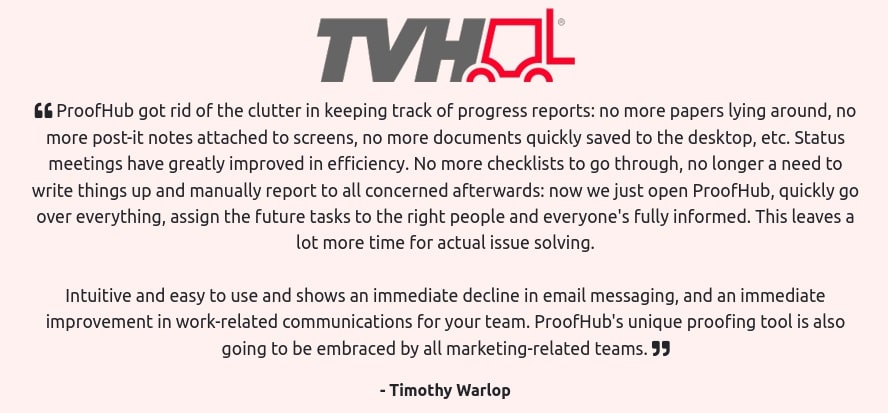
Source: https://www.proofhub.com/customers
2. Enhanced clarity and understanding
A project management software like ProofHub provides you with multiple perspectives for your team members to view tasks and the workflow. This improves the clarity and understanding of the tasks of various team members.
With a visual representation of tasks and deadlines, your team members would complete tasks in an effective timeframe. The collaboration features help you with real-time feedback and simplify the review process.
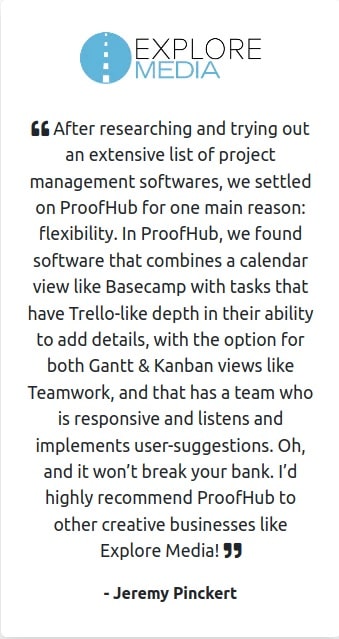
3. Improved collaboration and efficiency
You get access to a centralized dashboard where you can access various project information with ease. This serves as the central source of truth for your entire team, so that they are able to complete their tasks within their deadlines.
Further, you can plan and delegate tasks to your team members using the efficient task management dashboard. This dashboard also lets you monitor the real-time progress of various tasks, ensuring, you have complete control of both the project and your team.
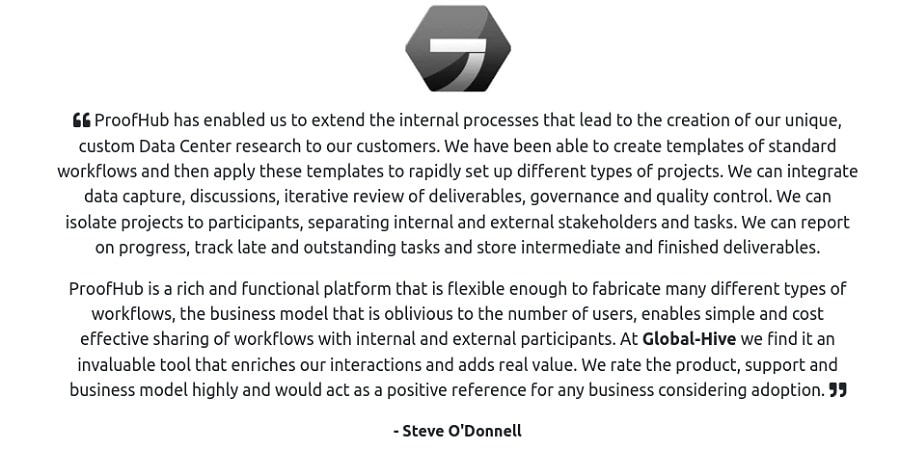
Bottom line
Ineffective email communication results in delayed responses and project overruns. Delays resulting in poor quality finished products and inconvenience caused to clients increase rapidly as projects keep getting complex over time.
Therefore, it is high time for project managers to incorporate project management software with powerful collaboration functionalities for eradicating the chaos of emails and effectively completing projects within deadlines!
Manage collaboration and task management on the same platform
Frequently Asked Questions
How do project management tools save time?
Project management tools help streamline the overall task management and collaboration by providing users with a centralized dashboard. This means users can plan, assign, and monitor the progress of the tasks as well as chat and collaborate for a seamless flow of projects. Users save time because various information and project files are stored and available for reference in an organized manner.
What are the key activities of project time management?
Project time management involves defining project scope, creating a work breakdown structure (WBS), developing a schedule, defining dependencies, allocating resources, monitoring progress, controlling changes, and closeout.
What is the importance of emails in project management?
Emails play a significant role in the communication and collaboration of team members, stakeholders, and clients. Additionally, email serves as a written record and plays a significant role in resolving issues and conflicts that may arise during the course of the project.

